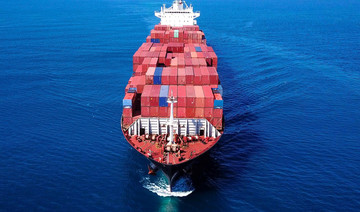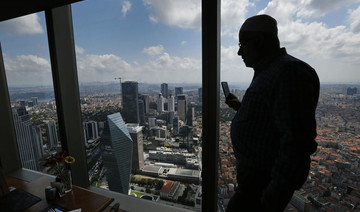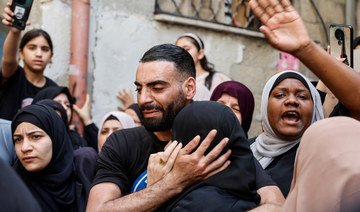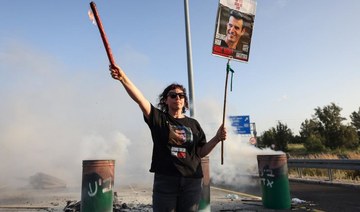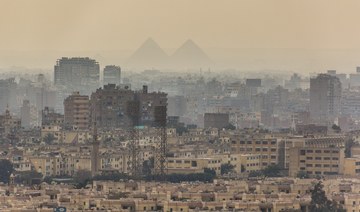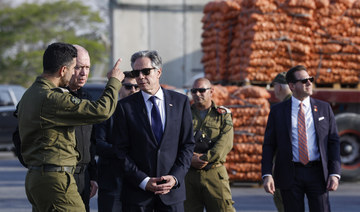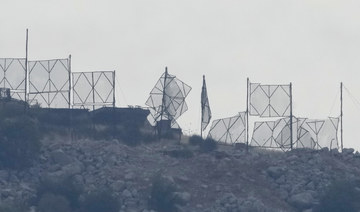DUBAI: With the rise of modern cities across the Gulf, the region is taking vital steps to safeguard its culture and heritage.
Saudi Arabia made another move towards preservation this week with an agreement to protect intangible cultural heritage. The partnership, between the General Culture Authority and the Saudi Heritage Preservation Society in Riyadh, will document elements of heritage across the Kingdom to protect, enrich and promote its culture.
According to UNESCO, intangible heritage is made up of oral traditions, performing arts, social practices, rituals and festive events, knowledge and practices concerning nature and the universe, and traditional craftsmanship knowledge and techniques. The region is also adding areas to the organization’s World Heritage list, which designates landmarks of cultural, historical or scientific significance.
Even while the more ancient aspects of Gulf countries’ heritage are being preserved, some are looking to a much shorter definition of history, as a wave of futuristic buildings in the GCC has put more recent buildings at risk of demolition. Last month, Dubai Municipality launched the “Modern Heritage Initiative” to preserve the emirate’s landmark buildings from the 1960s and 1970s, including one of the first skyscrapers, the Dubai World Trade Center, and the Clock Tower in Deira.
“The Gulf states need to recognize the value that the modern architecture holds in a historical context and for those of us who grew up between the 1960s and 1980s,” said Sultan Sooud Al-Qassemi, director’s fellow at MIT Media Lab and founder of Barjeel Art Foundation, a significant collection of Arab art based in Sharjah. “These buildings tell countless stories of the immigrants and the residents who made the UAE and the Gulf their homes.”
From the Al-Sawaber residential complex in Kuwait City, built in 1981 by Arthur Erickson, to the Al-Fahidi and Al-Shindagha Historical Neighborhoods in Dubai, as well as the historical Al-Balad district in Jeddah, protecting the old is becoming a priority.
“The structures with which we recognize major American cities like Miami, New York or Chicago gained more value as time passed and became tourist attractions,” Al-Qassemi said. “The same will happen with our 1960s and 1970s buildings if we only protect them.”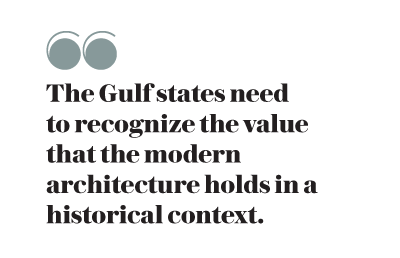
Last month, 90 buildings in Abu Dhabi were identified by the municipality for demolition. The buildings were said to either be abandoned or ageing, posing a threat to public health and safety.
But in a region as young as the Gulf, older buildings are viewed as precious gems to preserve. “It’s important for the Gulf and for the world to preserve historic buildings and traditional architecture because it is part of the countries’ history and civilization, much like the Pyramids in Egypt, the Wall of China and the Taj Mahal,” said Rashad Bukhash, chair of the Architectural Heritage Society in the UAE. “It’s the sign of architecture, people who lived in that area, and the economy. It also shows how they lived and the architecture, which coming generations can learn from.”
Bukhash, who has 30 years of experience in the field of managing and supervising modern architectural projects and conserving historic buildings, spoke of plans for green and sustainable architecture. “This is what we are now looking for,” he said. “But with the architecture we had in the 1950s, there was no use of energy and we used natural ventilation and sunlight, so it’s 100 per cent sustainable. We shouldn’t go back but we have to learn from that because people in the 1950s didn’t have electricity, so they innovated, using materials such as coral, stone, mud and gypsum.”
He called for increasing use of natural resources, including the sun and wind, to move towards a greener architecture. “With a lot of modern architecture coming up everywhere in Gulf cities, the situation today is much better than 10 or 20 years ago when we had a lot of buildings and districts being demolished,” Bukhash said. “Nowadays, in most Gulf cities, there are legislations for the protection of historic buildings, whether in the UAE, Bahrain, Qatar, Saudi Arabia or Oman.”
 Experts believe the trend is shifting towards preservation rather than demolition. “In Dubai, the municipality recently took the decision to start restoring 1960s buildings, which is a good sign,” Bukhash said. “We can’t compare historic Dubai from 1950 to the urban city of Dubai nowadays, which is less than 1 percent of the area, because it developed very quickly. The old part has been kept and protected with legislations and we are hopefully on the right track.”
Experts believe the trend is shifting towards preservation rather than demolition. “In Dubai, the municipality recently took the decision to start restoring 1960s buildings, which is a good sign,” Bukhash said. “We can’t compare historic Dubai from 1950 to the urban city of Dubai nowadays, which is less than 1 percent of the area, because it developed very quickly. The old part has been kept and protected with legislations and we are hopefully on the right track.”
Old architecture is defined by local materials, such as mud, wood and stone, while modern architecture focuses on concrete, steel and wood. “Protecting these fragile structures is a priority and is actually the biggest challenge facing urban planners and architects,” said Samir Saddi, founder and director of the Arab Research Center for Architecture and Design of the Environment. “The reason lies behind financial considerations since the huge developments, which are mostly speculative, rely on land acquisition and, most of the time, in historic sites or old neighborhoods. Hence, we witness this dilemma that owners of these old structures face today: to keep or to sell, in other words to continue living in old and ancestral buildings or to sell and move to modern facilities.”
He said preserving old urban settlements and structures can be done through creating legislation and bylaws that classify old cities, urban neighborhoods or structures, and prohibits their demolition. “Other ways include changing the usage of these buildings and transforming their interior spaces into new functions while keeping but renovating their elevations,” Saddi said. “Integrating these structures into contemporary developments that respect their scale and architectural dimensions is another approach that is mostly used in Europe nowadays.”
For Saddi, who devoted more than 45 years to documenting traditional and modern architecture in Africa and the Arab world, a city without its traditional urban neighborhoods or buildings is a city without soul. “We are building cities in the Arab world that have no soul and no reference to a past, no character or no continuity with what the ancestors have built,” he said. “This creates mediocre and uniform architecture that will look like any other in different places or countries. I documented a large number of historic buildings in the Arab word, mainly in Saudi Arabia, where I spent years taking photos of Old Jeddah’s amazing architecture.”
In 2000, he contacted the Saudi Ambassador in UNESCO, Paris, to ask that Old Jeddah be put on the World Heritage list. “It took 13 years for this to happen. In the meantime, a lot of historic buildings were lost. I did an exhibition in the Empty Quarter a couple of years back as a tribute to some of these buildings that I recorded but that physically disappeared.”
Jacqui Shaddock, design director and partner at H2R Design, said the Gulf region has changed rapidly over the past few decades. “The influx of people, cultures and commercial activities has been at much higher velocity than was the case in other cities, in Europe for instance,” she said.
“This means it is vital to act just as swiftly with the protection and preservation of the rich cultural heritage that is being swamped. As well as physically protecting existing buildings and historical sites, we see the importance of celebrating and teaching regional artisan craftsmanship, and exploring locally available materials, to ensure that even new builds retain a respectful nod to the heritage of the area rather than competing with it.”
Rising Gulf cities look to protect landmarks
Rising Gulf cities look to protect landmarks
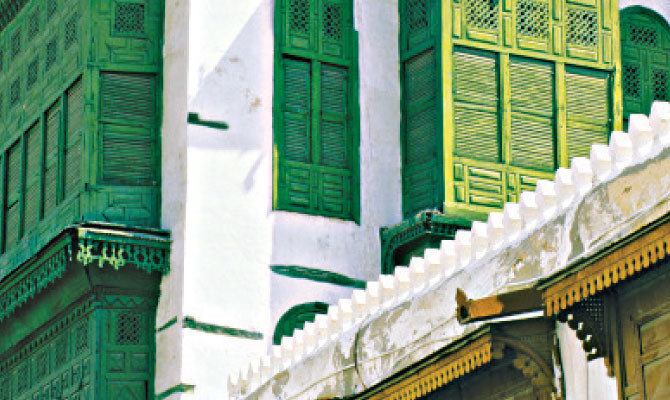
- Experts believe the trend is shifting towards preservation rather than demolition
- Old architecture is defined by local materials, such as mud, wood and stone, while modern architecture focuses on concrete, steel and wood
Hamas says Israeli PM trying to derail Gaza truce deal
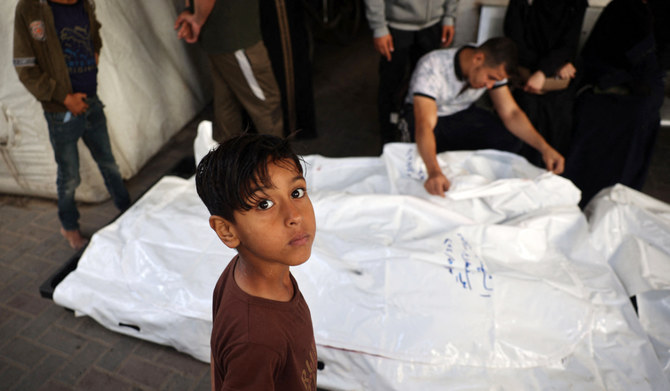
- Israel has killed more than 34,622 Palestinians, according to Gaza’s Health Ministry
GAZA STRIP, Palestinian Territories: A top Hamas official accused Israeli Prime Minister Benjamin Netanyahu on Friday of trying to derail a proposed Gaza truce and hostage release deal with his threats to keep fighting the Palestinian militant group.
“Netanyahu was the obstructionist of all previous rounds of dialogue... and it is clear that he still is,” senior Hamas official Hossam Badran told AFP by telephone.
Foreign mediators have waited for a Hamas response to a proposal to halt the fighting for 40 days and exchange hostages for Palestinian prisoners, which its chief Ismail Haniyeh has said the group was considering in a “positive spirit.”
A major stumbling block has been that, while Hamas has demanded a lasting ceasefire, Netanyahu has vowed to crush its remaining fighters in the far-southern city of Rafah, which is packed with displaced civilians.
The hawkish prime minister has insisted he will send ground troops into Rafah, despite strong concerns voiced by UN agencies and ally Washington for the safety of the 1.2 million civilians inside the city.
World Health Organization chief Tedros Adhanom Ghebreyesus said the agency was “deeply concerned that a full-scale military operation in Rafah... could lead to a bloodbath.”
“The broken health system would not be able to cope with a surge in casualties and deaths that a Rafah incursion would cause,” an agency statement said.
Badran charged that Netanyahu’s insistence on attacking Rafah was calculated to “thwart any possibility of concluding an agreement” in the negotiations brokered by Egyptian, Qatari and US mediators.
Israeli air strikes killed several more people in Rafah overnight, Palestinian medics and the civil defense agency said.
One bereaved resident, Sanaa Zoorob, said her sister and six of her nieces and nephews were killed.
Two of the children “were found in pieces in their mother’s embrace,” Zoorob said, appealing for “a permanent ceasefire and a full withdrawal from Gaza.”
The war broke out after Hamas’s October 7 attack on Israel resulted in the deaths of more than 1,170 people, mostly civilians, according to an AFP tally of Israeli official figures.
The militants also took some 250 hostages, of whom Israel estimates 128 remain in Gaza.
The army says 35 of them are dead, including 49-year-old Dror Or, a resident of the badly hit kibbutz Beeri, whose death was confirmed by authorities on Friday.
Israel’s devastating retaliatory campaign has killed at least 34,622 people in Gaza, mostly women and children, according to the Hamas-run territory’s health ministry.
Israel has weathered an international backlash over the spiralling death toll.
Pro-Palestinian protests that have rocked US campuses for weeks were more muted Friday after a series of clashes with police, mass arrests and a stern White House directive to restore order.
But similar demonstrations have spread to campuses in Britain, France, Mexico, Australia and elsewhere.
Turkiye announced on Thursday that it was suspending all trade with Israel, valued by the government at $9.5 billion a year.
President Recep Tayyip Erdogan said the move was intended to “force Israel to agree to a ceasefire and increase the amount of humanitarian aid to enter” Gaza.
Yemen’s Iran-backed Houthi rebels, who have carried out months of attacks on merchant shipping in the Red Sea in a costly blow to maritime trade, said they would extend their attacks on Israel-bound shipping to the Mediterranean “immediately.”
Israel’s siege has pushed many of Gaza’s 2.4 million people to the brink of famine.
US pressure has prompted Israel to facilitate more aid deliveries to Gaza, including through the reopened Erez crossing that leads directly into the hardest-hit north.
Food availability has improved “a little bit,” said the World Health Organization’s representative in the Palestinian territories, Rik Peeperkorn.
But he warned that the threat of famine had “absolutely not” gone away.
Five Israeli human rights groups that took Israel to court over restrictions on aid to war-torn Gaza said the state’s insistence that it has met its obligations was “incomprehensible.”
The government had told the supreme court that the steps it had taken went “above and beyond” its obligations under international law.
Gisha and four other Israeli non-profit organizations retorted that the shortages evident inside Gaza indicated “the respondents are not meeting their obligations, not to the required extent nor at the necessary speed.”
The US-based charity World Central Kitchen resumed operations this week, after suspending them in the aftermath of Israeli drone strikes that killed seven of its staff as they unloaded aid in Gaza on April 1.
The group’s kitchen manager Zakria Yahya Abukuwaik said: “We realized after the kitchen closed that many mouths were left hungry.”
World Central Kitchen was involved in an effort earlier this year to establish a new maritime aid corridor to Gaza from Cyprus to help compensate for dwindling deliveries by land from Israel.
The project suffered a new blow Friday when the US military announced high winds had forced troops working to assemble a temporary aid pier off the Gaza coast to relocate to the Israeli port of Ashdod.
“The partially built pier and military vessels involved in its construction have moved to the Port of Ashdod, where assembly will continue, and will be completed prior to the emplacement of the pier in its intended location when sea states subside,” US Central Command said in a statement.
Several Arab and Western governments have also airdropped aid into northern Gaza. Civil defense spokesman Mahmud Basal said one person was killed and several injured when they were hit by falling pallets.
€1bn EU ‘bribe’ over Syrian refugees stirs anger in Lebanon

BEIRUT: Lebanon’s Prime Minister Najib Mikati on Friday vowed to step up deportations as part of a crackdown on illegal residents in the country.
“This matter is not up for debate, and orders have been given to the relevant authorities to implement what is necessary,” he said.
Mikati’s comments came after the EU on Thursday announced a €1 billion ($1.07 billion) aid package for Lebanon, mostly to boost border control in a bid to curb refugee flows across the Mediterranean Sea to Cyprus and Italy.
Lebanon hosts more than 1.5 million Syrian refugees.
In a television interview, Mikati said: “Any Syrian residing in Lebanon illegally will be deported, and a different approach will be taken toward all registered individuals compared to unregistered ones.”
While Mikati welcomed the announcement of increased European aid, some political and religious figures described the package as a “bribe” to resettle Syrian refugees in Lebanon, and warned that Lebanon is “not for sale.”
Local newspaper headlines highlighted the objections, which follow increasing numbers of murders, thefts, and kidnappings in recent months carried out by Syrians who entered Lebanon illegally.
Syrian inmates now make up 35 percent of Lebanon’s prison population, according to Interior Minister Bassam Mawlawi.
Cyprus recently complained about the increasing number of boats arriving on its shores carrying Syrians who traveled via Lebanon. Dozens remain stranded on the island, which refuses to accept them as refugees, and wants to return them to Lebanon.
Mikati said that there is “a European division” on the issue of safe areas in Syria for the return of refugees.
“We will undertake a campaign in this context to push the EU to take a decision that there are safe areas in Syria,” he added.
The announcement of the EU package was made as European Commission President Ursula von der Leyen visited Lebanon on Thursday with Cypriot President Nikos Christodoulides.
However, Nicolas Sehnaoui, a member of the Strong Lebanon parliamentary bloc, said: “Keep the billion euros, and take an additional billion in exchange for taking all the Syrian refugees to European countries.”
Razi Al-Hajj, a member of the Strong Republic bloc, described the presence of Syrian refugees in the country as a “ticking time bomb.”
He said: “If Mikati wants to dispel the doubts of the Lebanese about the EU’s agenda in Lebanon, and the government’s true intention, he must begin implementing what he promised, which (means) deporting anyone residing illegally on Lebanese territory.”
Change party MP Waddah Sadek said: “Those who are residing illegally in Lebanon — the number of whom is significant — should be deported. An appropriate solution should then be reached regarding those who sought refuge in Lebanon for fear of getting killed or persecuted.”
Jaafari Grand Mufti Sheikh Ahmad Kabalan said in his Friday sermon: “We don’t want to slaughter Lebanon with 1 billion poisoned euros.
“Europe is Washington’s partner in the devastation in Syria and the siege on Lebanon. I warn those in charge against assuming the role of Europe’s security and political guard. The Syrian refugees’ case requires an urgent resolution. We ran out of time, and our country’s demography, stability, security, economy and livelihood are threatened.”
Maroun Al-Khawli from the National Campaign for the Return of Syrian Refugees, said: “Lebanon will not be for sale under any circumstances.”
He said the aid package “is a humiliating deal for Lebanon’s dignity and sovereignty, and a dark spot in the history of the caretaker government.”
Shiite cleric Ali Mohammed Hussein Fadlallah said in his Friday sermon: “The European Union resorts to the financial aspect to persuade the Lebanese when it comes to the Syrian refugees’ file.
“However, this matter is not limited to the financial dimension. It requires us to address its root causes and organize the Syrian presence in a way that doesn’t cause any internal repercussions, concerns and tensions that might affect the relationship between Lebanese and Syrian refugees.”
In a statement, the Progress Party said: “The European countries’ policy ensures that the Syrian refugees’ boats don’t reach their shores. This is what made them offer Lebanon €1 billion to make up for their presence in the country.
“The governing system accepted the bribe to recycle itself at the expense of the accumulating crises without organizing this file.”
The party proposed setting up camps for Syrian refugees on the border, and securing their needs through international support.
Egypt braces for second summer of power cuts as gas supplies dwindle

- The cuts started as Egypt allocated more of its gas production for export to raise scarce dollars, importing polluting fuel oil to keep some power stations running
CAIRO: Among the bustling workshops of central Cairo’s Al-Sabtiyah district, Om Ghada’s blacksmith business has seen profits dip as two-hour power cuts each day returned after a brief suspension during the holy month of Ramadan.
When scheduled outages began last summer it came as a shock to Egyptians accustomed to years of reliable power supplies under President Abdel Fattah El-Sisi, and the government promised they would be temporary.
But supplies of the natural gas that helped generate an electricity surplus are dwindling and the power cuts are back.
The outages “create a lot of obstacles and cut into my profit,” said Om Ghada, as sparks flew from a metal cutter nearby. She owns the workshop, which is among dozens in the area that rely on electricity to power machines.
“One customer yesterday waited two hours, until they became impatient and left,” she said.
While Egypt recently secured record investments from the United Arab Emirates and an expanded IMF program, easing a foreign currency crisis, power cuts are a reminder of underlying economic challenges.
The cuts started as Egypt allocated more of its gas production for export to raise scarce dollars, importing polluting fuel oil to keep some power stations running. The government initially blamed them on high temperatures, but they continued through 2023 after summer ended even after the government paused exports to meet demand.
Egypt has been seeking a role as a regional energy exporter, eyeing electricity sales to countries including Saudi Arabia and Libya, planning an interconnector to Greece, and shipping Liquefied Natural Gas (LNG) cargoes from two liquefaction plants.
But development of renewables has been halting and gas supplies are in doubt because of a lack of large discoveries since the giant Zohr field in 2015. That pushed gas production in 2023 to its lowest level since 2017, and the government recently started importing LNG cargoes.
Officials have blamed power cuts on rising demand from a growing population of 106 million, mega-projects backed by El-Sisi, and urban development.
Cuts to electricity subsidies have been slowed as the economy came under pressure in recent years.
Egypt’s electricity ministry did not immediately respond to a request for comment.
SALES DOWN
The power cuts were suspended over Ramadan and the Eid holiday that followed, and local media said they would also be halted for labor day and spring holidays going over this weekend. But they are sometimes hard to predict and are hurting small businesses that play a crucial role in an economy where growth has slowed and is expected to ease to 2.8 percent in the current financial year ending in June, from above 4 percent last year.
Ahmed Hussein, an air conditioning technician in Al-Sabtiyah, said daytime power cuts reduced productivity by 40 percent. South of central Cairo in the Sayeda Zeinab neighborhood, Essam said sales at the dessert shop where he works were down 30 percent since the regular power cuts began.
“As long as there’s no electricity there are no sales. The safe and the till aren’t working,” Essam, who didn’t give his last name, said. “Customers can’t see anything.”
Sales of generators are up, but many can’t afford them.
The cuts have drawn ire on social media, where some have complained about being stuck in elevators, or unable to use them, and others have bemoaned the lack of air conditioning in hotter areas in southern Egypt.
At the launch of a state-run cloud computing data center this week, El-Sisi encouraged citizens to focus on developing sectors like information technology, saying “this needs brains, not a factory or anything else.”
But as one social media post quipped in response: “This needs electricity and unlimited Internet.”
Rafah incursion would put hundreds of thousands of lives at risk, UN aid agency says
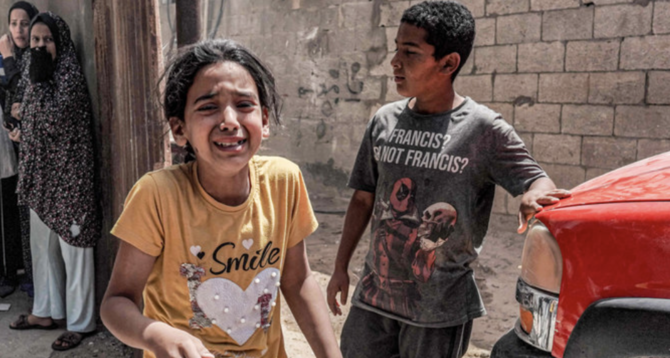
- Leaders internationally have urged Israeli Prime Minister Benjamin Netanyahu to be cautious
- US Defense Secretary Lloyd Austin said any US response to incursion would be up to President Biden
GAZA: The United Nations humanitarian aid agency says hundreds of thousands of people would be “at imminent risk of death” if Israel carries out a military assault in the southern Gaza city of Rafah.
The city has become critical for humanitarian aid and is highly concentrated with displaced Palestinians.
Leaders internationally have urged Israeli Prime Minister Benjamin Netanyahu to be cautious about any incursion into Rafah, where seven people — mostly children — were killed overnight in an Israeli airstrike.
On Thursday, US Defense Secretary Lloyd Austin said any US response to such an incursion would be up to President Joe Biden, but that currently, “conditions are not favorable to any kind of operation.”
Turkiye’s trade minister said Friday that its new trade ban on Israel was in response to “the deterioration and aggravation of the situation in Rafah.”
The Israel-Hamas war has driven around 80 percent of Gaza’s population of 2.3 million from their homes, caused vast destruction in several towns and cities, and pushed northern Gaza to the brink of famine.
The death toll in Gaza has soared to more than 34,500 people, according to local health officials, and the territory’s entire population has been driven into a humanitarian catastrophe.
The war began Oct. 7 when Hamas attacked southern Israel, abducting about 250 people and killing around 1,200, mostly civilians. Israel says militants still hold around 100 hostages and the remains of more than 30 others.
Dozens of people demonstrated Thursday night outside Israel’s military headquarters in Tel Aviv, demanding a deal to release the hostages. Meanwhile, Hamas said it would send a delegation to Cairo as soon as possible to keep working on ceasefire talks. A leaked truce proposal hints at compromises by both sides after months of talks languishing in a stalemate.
Across the US, tent encampments and demonstrations against the Israel-Hamas war have spread across university campuses.
More than 2,000 protesters have been arrested over the past two weeks as students rally against the war’s death toll and call for universities to separate themselves from any companies that are advancing Israel’s military efforts in Gaza.
Iraqi militant group claims missile attack on Tel Aviv targets, source says

- The attack was carried out with multiple Arqub-type cruise missiles
BAGHDAD: The Islamic Resistance in Iraq, a group of Iran-backed armed groups, launched multiple attacks on Israel using cruise missiles on Thursday, a source in the group said.
The source told Reuters the attack was carried out with multiple Arqub-type cruise missiles and targeted the Israeli city of Tel Aviv for the first time.
The Islamic Resistance in Iraq has claimed dozens of rockets and drone attacks on US forces in Iraq and Syria and on targets in Israel in the more than six months since the Israel-Hamas war erupted on Oct. 7.
Israel has not publicly commented on the attacks claimed by Iraqi armed groups.





